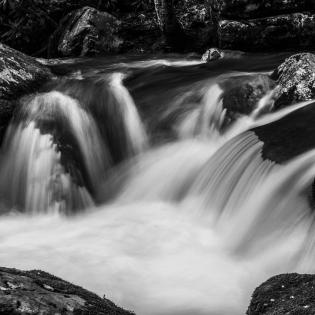These Lakes Are Great
Participants discuss the attributes and benefits of local water resources and ecosystems. They identify the interrelatedness of humans and the environment in the book A River Ran Wild, and discuss how the way we treat the water impacts our lives.
- define environmental stewardship and give examples.
- identify citizen responsibility for health of the local water system.
- a read-aloud copy of the book A River Ran Wild by Lynn Cherry
Cherry, Lynne. A River Ran Wild. An Environmental History (A Reading Rainbow Book). Harcourt. ISBN: 152005420
Instructions
Anticipatory Set:
Display a large map that shows the Great Lakes or a local water system. Ask the learners what they know about the water system and why it is important. Make a list of the responses. Brainstorm another list of what it would be like if the water system wasn't protected by individuals and nonprofit organizations. Define environmental stewardship as the responsible use and protection of the natural environment.
Read and discuss the handout below, Fishing for Facts. Read it together while learners highlight important information or make notes on the side about interesting facts to discuss further.
Show the cover of the picture book A River Ran Wild. Tell them it is the true story of how a once-great, clean river became polluted, and how Marion Stoddard and others practicing philanthropy helped save the river.
Read aloud the book, The River Ran Wild, and discuss the following questions:
- How does a river change over time? Is this change always good or bad?
- What factors did we discover about the Nashua River that we could see happening in the Great Lakes or another body of water?
- Why do you think Marion felt that it was her responsibility to act philanthropically and accept stewardship for the river?
As readers become curious about terms that come up in the reading, discuss their definitions and context: ecosystem, pollution, estuaries, conservation, water quality, philanthropy, stewardship, community capital, selfish, and selfless.
Create learning groups based on action ideas or interests of learners. Discuss how the concepts involved in stewardship and philanthropy can be connected to the saving of our Great Lakes ecosystems (or other local water systems).
Each learning group creates a social media post or challenge, or an advocacy poster to encourage others to get involved in caring for water resources. They may come up with a catchy slogan about caring for the water, reflecting the message of the famous slogan, "Give a Hoot, Don't Pollute." They decide their audience and design and share their campaign publically.
Reflect on the project. Discuss whether their action raised awareness of the issues of pollution and conservation. Talk about what other action they can take to protect local water resources or The Great Lakes. Discuss why it is each citizen's responsibility to make good choices about water.
Handouts
Philanthropy Framework
-
Strand PHIL.I Definitions of Philanthropy
-
Standard DP 01. Define Philanthropy
-
Benchmark E.1 Define philanthropy as the giving and sharing of time, talent, or treasure intended for the common good.
-
Benchmark E.4 Define and give examples of selfishness and selflessness.
-
-
-
Strand PHIL.II Philanthropy and Civil Society
-
Standard PCS 03. Philanthropy and Economics
-
Benchmark E.5 Recognize the wise use of resources as <i>stewardship</i>.
-
Benchmark E.7 Define and describe private property and common resources.
-
-
-
Strand PHIL.III Philanthropy and the Individual
-
Standard PI 01. Reasons for Individual Philanthropy
-
Benchmark E.3 Define stewardship and give examples.
-
-
